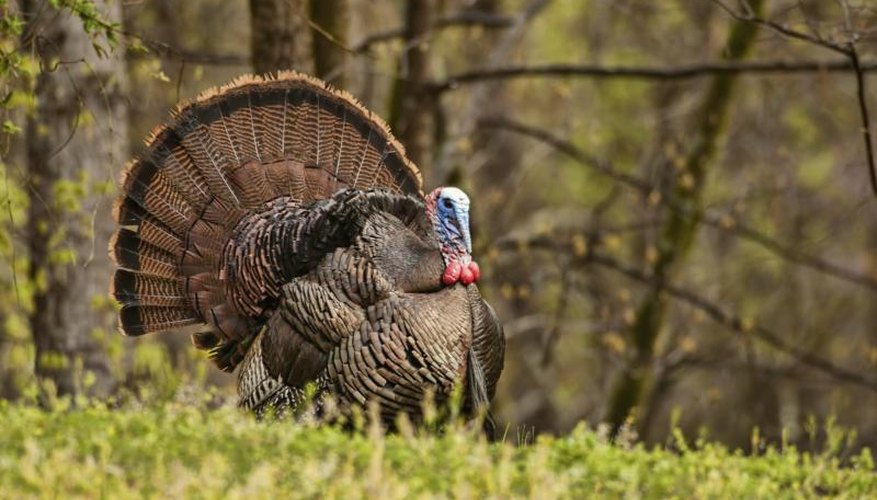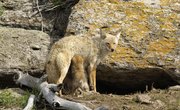
Wild turkey hunting, as with all game, is regulated in each state. These regulations restrict the manner in which you can bag a wild turkey, whether you're hunting on your own, or public land. It's against the law to trap a wild turkey. Shotgun and bow are the two legal methods of bagging a wild turkey, with shotgun being most common. If this is your first time trying to hunt turkey, consider taking an experienced guide to make your hunt more successful.
Scout for Turkeys
A week or two before the season starts, scout the woods to identify the areas the turkeys frequent most. The goal is to find roosting areas, feeding sites and strutting locations. Look for signs such as tracks, feathers, droppings and scratchings. Good scouting times are in the early morning hours, from about one-half hour before the sun rises until mid-morning, as well as late evening when the turkeys go to roost. Turkeys tend to roost in the same areas each night, so finding these areas is crucial to your success.
Learn Turkey Calling
The most effective way to get within range to catch a wild turkey is to use turkey calls. Prior to your hunt, familiarize yourself with the sounds turkeys make and try to replicate the calls with your voice. The best way to master turkey calls is to listen to live turkeys on an instructional video. It takes some time and practice to master a few of the basic turkey calls. Alternatively, you can purchase a commercial turkey calling device.
Find a Blind
Turkeys spook easily so you must find an area where you're camouflaged and not easily visible. Your blind spot needs to be at about 100 yards from roosting trees and you must be able to get to it without making noise. Pick a few different locations near the known roosting areas and strut zones, which are small clearings near the roost where turkeys strut around trying to get the attention of hens. Look for thick brush that you can hide behind near these areas.
Hide and Call
When you're ready to hunt, wear camouflage clothing and approach the known strutting and roosting areas and listen for clucks and gobbles. Quietly follow the direction of the turkey sounds and hunker down in a blind spot with your shotgun or bow ready. Start calling to the turkeys with a tree call and then a cackle to see if the turkeys begin coming in your direction. Some hunters set up decoy hens in the clearing ahead of time. Give a call and then wait patiently. If the turkeys aren't coming to the call, repeat it and wait. When the turkeys start coming towards the call stop calling and take aim. Once a turkey is within range take your shot.
References
Writer Bio
Ainsley Whitley is a contributing writer for various branded properties that together attract more than 280 million readers seeking influential content. Whitley's articles have appeared in various print and online magazines, including "GQ," "Details," "Southern Living" and "Cooking Light."



